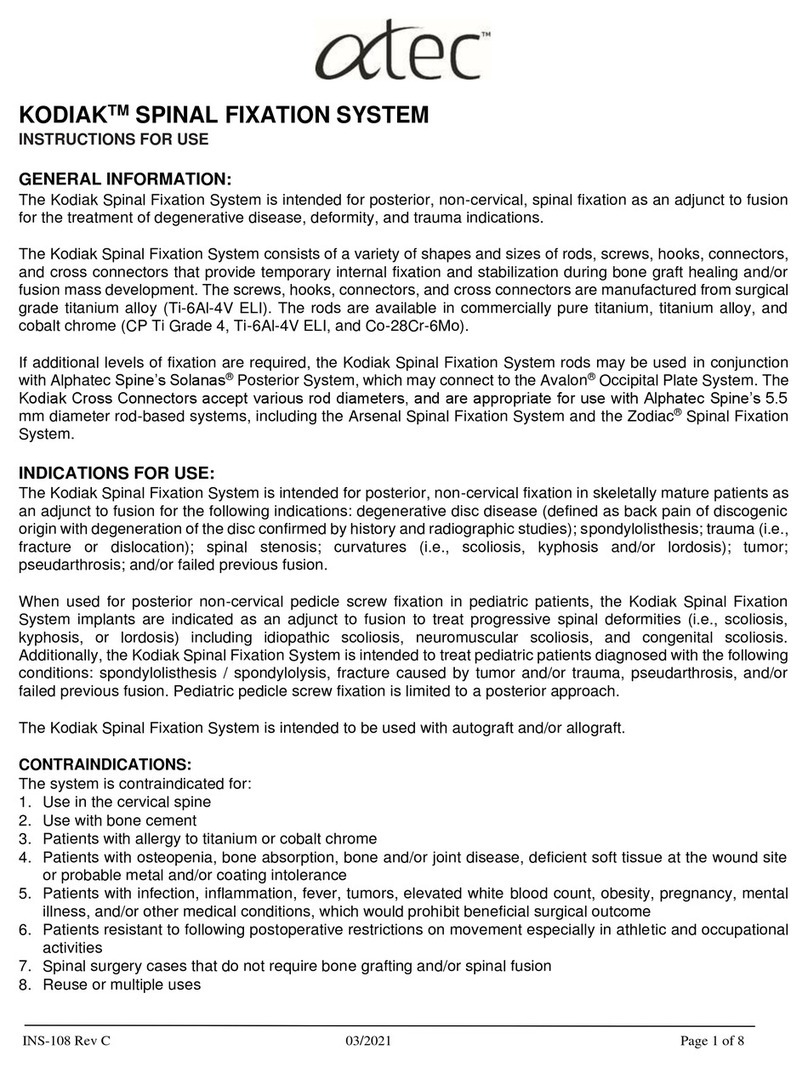
INS-136 C 12/2023 Page 6 of 7
Guidance and manufacturer’s declaration – electromagnetic immunity
The PTH is intended for use in the electromagnetic environment specified below. The customer or the user of the PTH
should assure that it is used in such an environment.
IMMUNITY
TEST
IEC 60601 TEST
LEVEL Compliance level Electromagnetic environment - guidance
Radiated
RF IEC
61000-4-3
3 V/m
80 MHz to 2.7 GHz
3 V/m
80 MHz to 2.7 GHz
Portable and mobile RF communications equipment should
be used no closer to any part of the PTH, including cables,
than the recommended separation distance calculated from
the equation applicable to the frequency of the transmitter.
Recommended separation distance
d = [3.5/3] √P 80 MHz to 800 MHz
d = [7/3] √P 800 MHz to 2.7 GHz
where P is the maximum output power rating of the transmitter
in wats (W) according to the transmitter manufacturer and d is
the recommended separation distance in meters (m). Field
strengths from fixed RF transmitters, as determined by an
electromagnetic site survey, should be less than the
compliance level in each frequency range. Interference may
occur in the vicinity of equipment marked with the following
symbol:
NOTE 1 At 80 MHz and 800 MHz, the higher frequency range applies.
NOTE 2 These guidelines may not apply in all situations. Electromagnetic propagation is affected by absorption and
reflection from structures, objects and people.
Field strengths from fixed transmitters, such as base stations for radio (cellular/cordless) telephones and land mobile
radios, amateur radio, AM and FM radio broadcast and TV broadcast cannot be predicted theoretically with accuracy.
To assess the electromagnetic environment due to fixed RF transmitters, an electromagnetic site survey should be
considered. If the measured field strength in the location in which the PTH is used exceeds the applicable RF
compliance level above, the PTH should be observed to verify normal operation. If abnormal performance is observed,
additional measures may be necessary, such as re-orienting or relocating the PTH.
RETURNING INSTRUMENTS TO ALPHATEC SPINE:
All used products returning to Alphatec Spine must undergo all steps of cleaning, inspection, and
terminal sterilization before being returned to Alphatec Spine. Documentation of decontamination
should be included.
UDI CONSTRUCTION
To compile a unique device identifier (UDI) for reusable, reprocessed devices, the device identifier
(GTIN) may be ascertained by searching for the part number in the FDA GUDID at
https://accessgudid.nlm.nih.gov/. The production identifier(s) (e.g., lot number, serial number)
may be found directly marked on the device.
COMPLAINT HANDLING / REPORTING:
All product complaints relating to safety, efficacy or performance of the product should be reported
immediately to Alphatec Spine by telephone, e-mail, or letter, per contact information below. All
complaints should be accompanied by name, part number, and lot numbers. The person
formulating the complaint should provide their name, address, and as many details as possible.

























